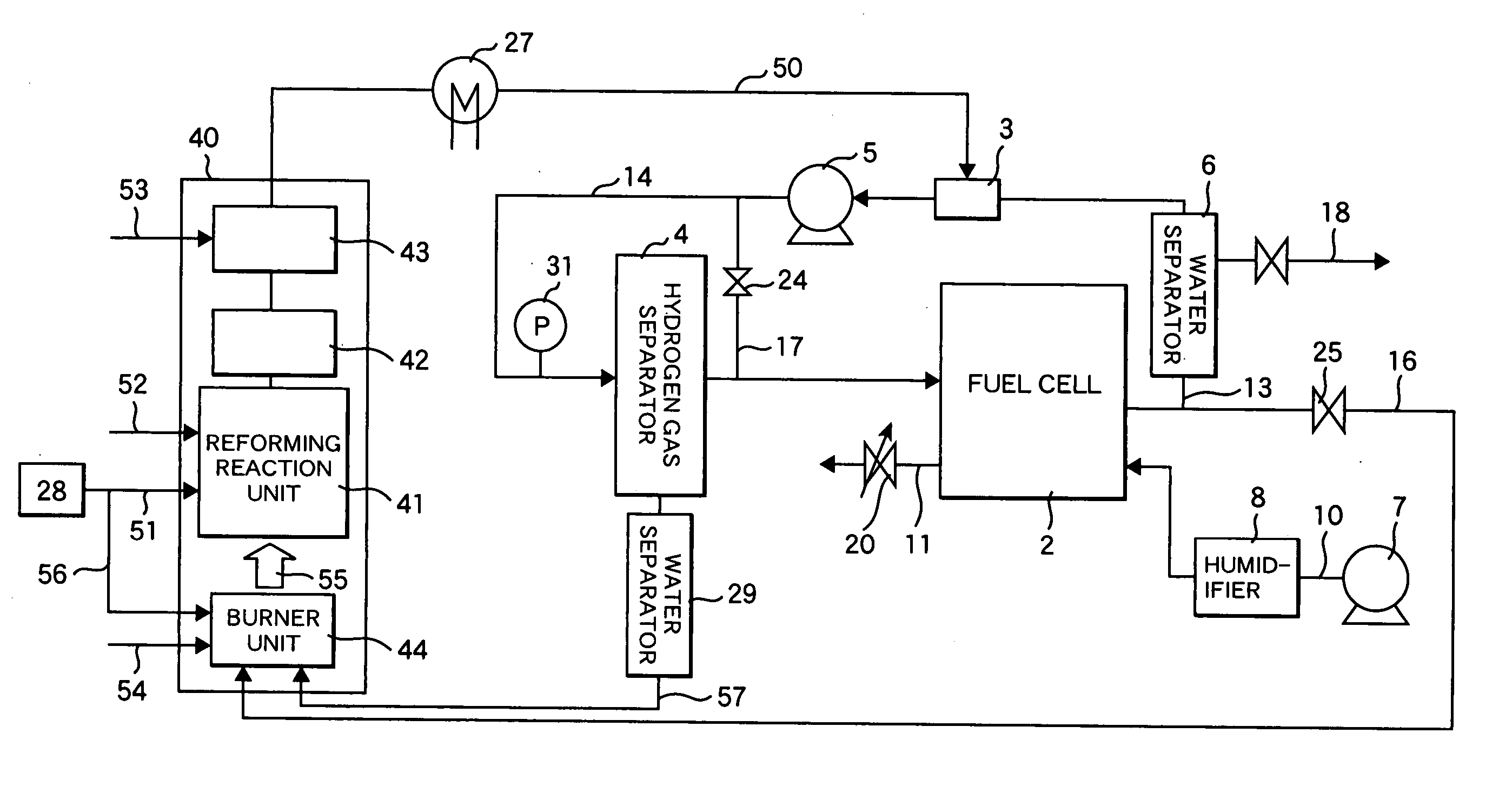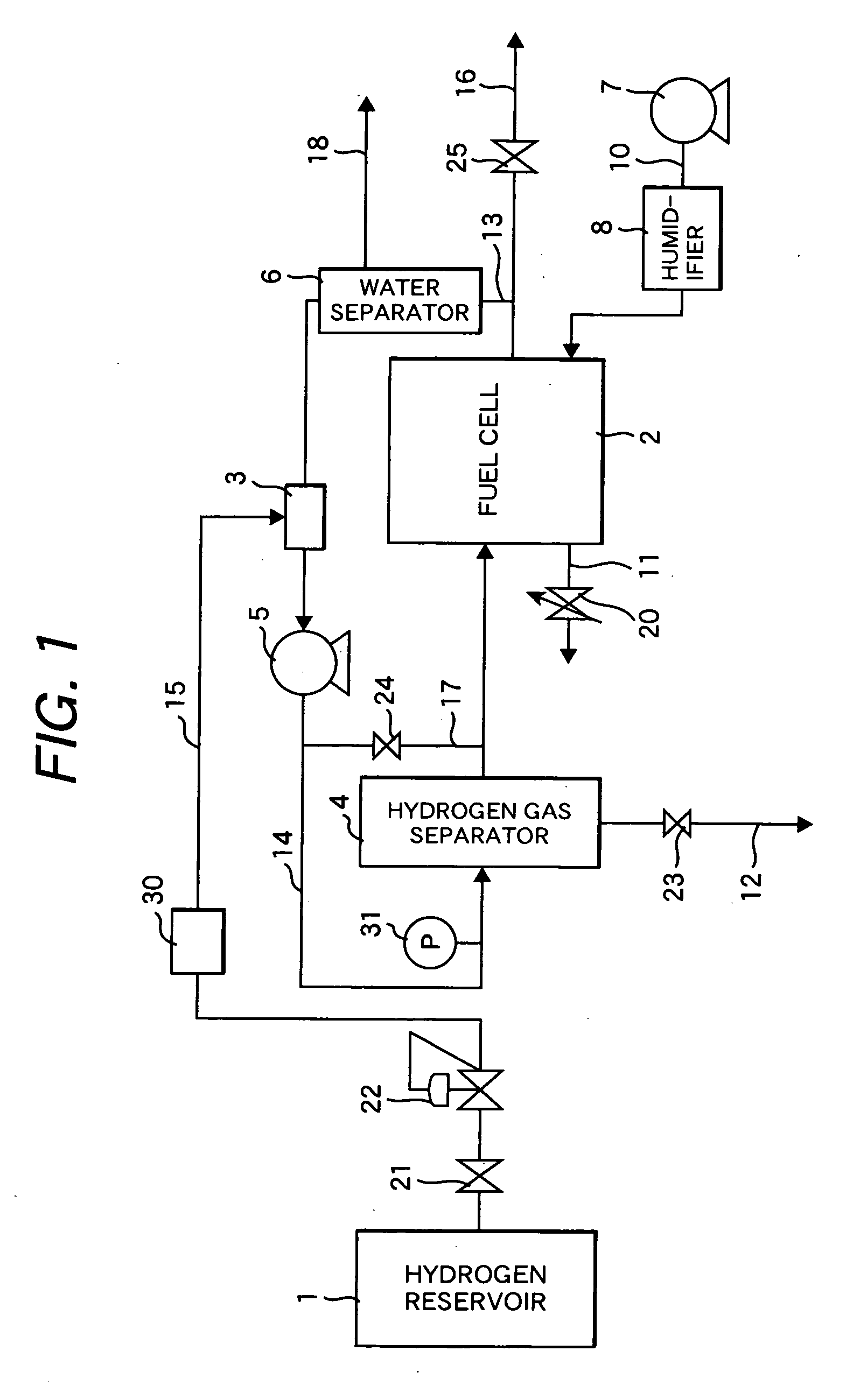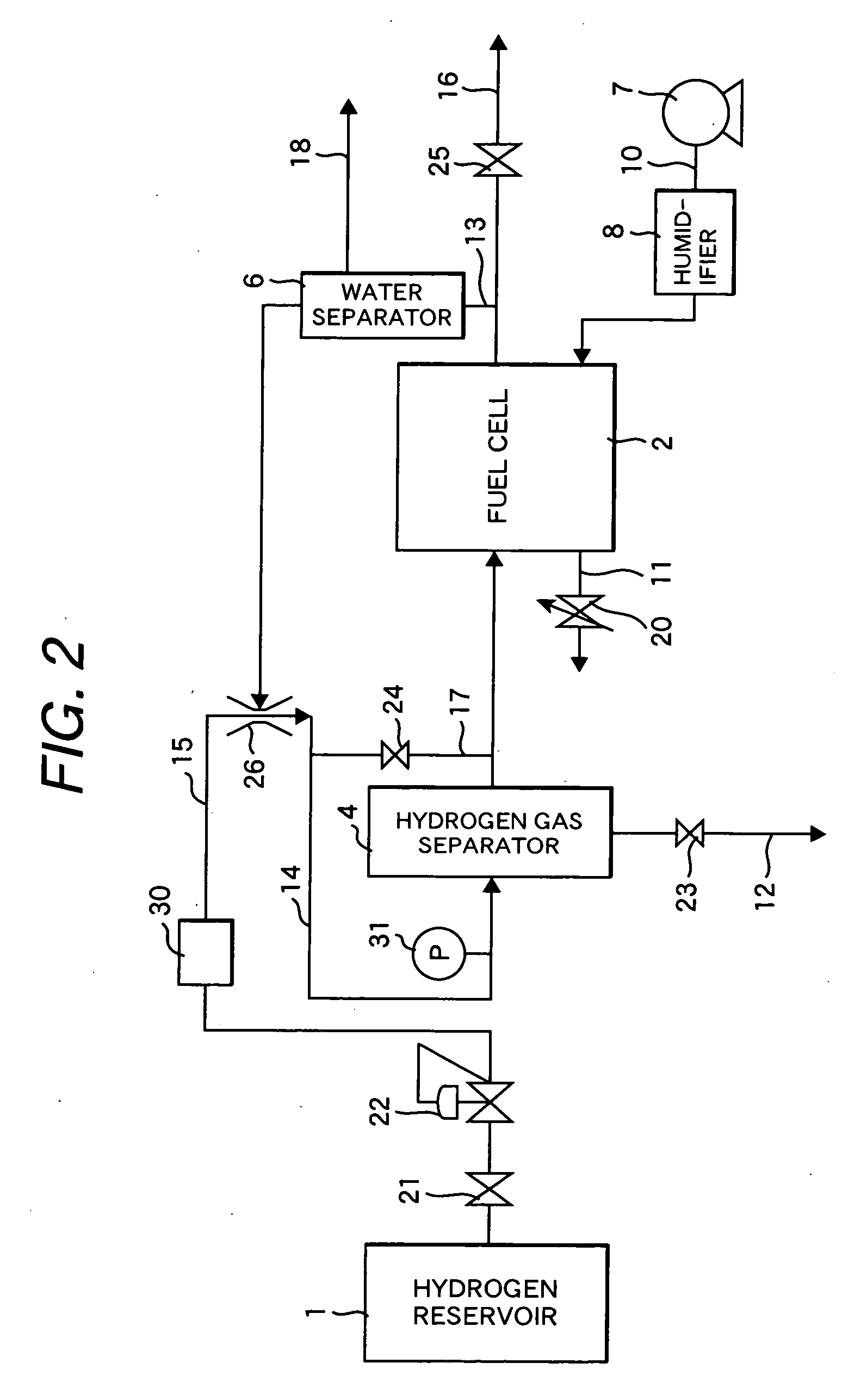Fuel cell power generation system
a technology of power generation system and fuel cell, which is applied in the direction of fuel cells, electrochemical generators, electrical devices, etc., can solve the problems of inability to consider the effect of effectively using unreacted hydrogen contained in the fuel electrode, inability to consider the improvement of the hydrogen concentration in and removal of impurities in the fuel gas used upstream of the cell, and inability to consider the composition of the fuel gas. , to achieve the effect of high utilization rate of fuel, simplified configuration, and continuous
- Summary
- Abstract
- Description
- Claims
- Application Information
AI Technical Summary
Benefits of technology
Problems solved by technology
Method used
Image
Examples
embodiment 1
[0037]FIG. 1 is a schematic diagram illustrating the configuration of a fuel cell power generation system as an embodiment of the present invention (first embodiment). The fuel cell power generation system according to the first embodiment comprises a hydrogen reservoir 1, a fuel cell 2, a mixer 3, a hydrogen gas separator 4, and a circulation blower 5. The hydrogen reservoir 1 serves as a fuel feed unit and stores a fuel gas (anode gas) containing hydrogen gas at a high pressure. The fuel cell 2 generates power by using hydrogen gas in the fuel gas as a fuel for power generation. The mixer 3 serves to mix an exhaust gas discharged from the fuel cell 2 with the fuel gas. The hydrogen gas separator 4 separates hydrogen gas from a gas mixture discharged from the mixer 3. The circulation blower 5 pressurizes the gas mixture and conveys the pressurized gas mixture gas to the hydrogen gas separator 4.
[0038] The operation of the fuel cell power generation system illustrated in FIG. 1 wil...
embodiment 2
[0050]FIG. 3 illustrates another embodiment of the fuel cell power generation systems according to the present invention. The system according to the second embodiment has the same configuration and operation as the system shown in FIG. 1, except for using a reformer of a conventional external heating system as the fuel feed unit and except that the reformer herein has a different configuration. The reformer 40 comprises a reforming reaction unit 41, a carbon monoxide shift converter (CO-shift converter) 42, and a carbon monoxide-selective oxidizer 43 in this order from upstream. The reformer 40 further comprises a burner unit 44 for supplying heat necessary to the reaction to the reforming reaction unit. The reformed gas in a reformer outlet piping 50 has a hydrogen concentration of about 75% on dry basis. If the reformed gas has a high temperature, it is cooled to about 70° C. to about 90° C. in a cooler 27. The raw fuel herein is, for example, a hydrocarbon such as town gas, LPG,...
embodiment 3
[0053]FIG. 4 shows a fuel cell power generation system according to the third embodiment of the present invention. The system has a reformer 40 which comprises only the reforming reaction unit 41 and the burner unit 44 instead of the reformer in the system according to the second embodiment (FIG. 3).
[0054] The system according to the third embodiment (FIG. 4) differ from the system according to the second embodiment (FIG. 3) in that, in addition to the configuration of the reformer 40, a CO-selective oxidizer 43 is arranged between the hydrogen gas separator 4 and the fuel cell 2, and a heat exchanger 45 for the temperature control of the CO-selective oxidizer 43 is arranged upstream from the CO-selective oxidizer 43; and that another heat exchanger 46 is arranged in the reformer outlet piping 50 between the reforming reaction unit 41 and the mixer 3. The heat exchanger 46 serves to cool the reformed gas and produce steam. The raw fuel is reformed in the reforming reaction unit 41,...
PUM
| Property | Measurement | Unit |
|---|---|---|
| temperature | aaaaa | aaaaa |
| temperature | aaaaa | aaaaa |
| concentration | aaaaa | aaaaa |
Abstract
Description
Claims
Application Information
 Login to View More
Login to View More - R&D
- Intellectual Property
- Life Sciences
- Materials
- Tech Scout
- Unparalleled Data Quality
- Higher Quality Content
- 60% Fewer Hallucinations
Browse by: Latest US Patents, China's latest patents, Technical Efficacy Thesaurus, Application Domain, Technology Topic, Popular Technical Reports.
© 2025 PatSnap. All rights reserved.Legal|Privacy policy|Modern Slavery Act Transparency Statement|Sitemap|About US| Contact US: help@patsnap.com



